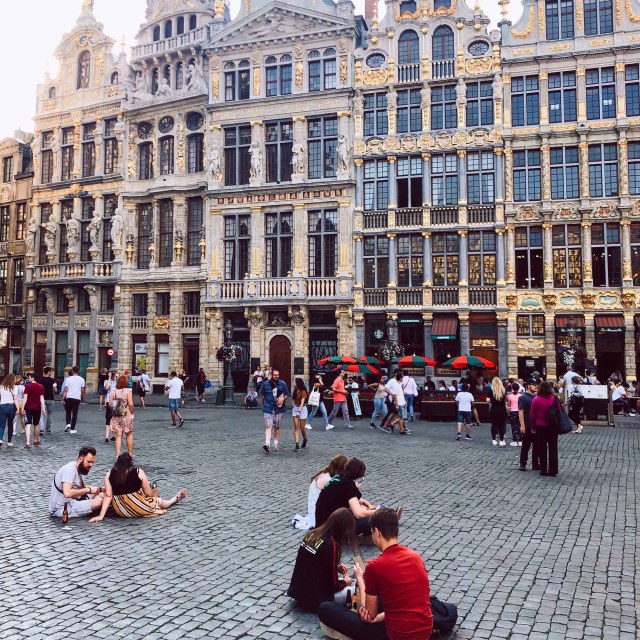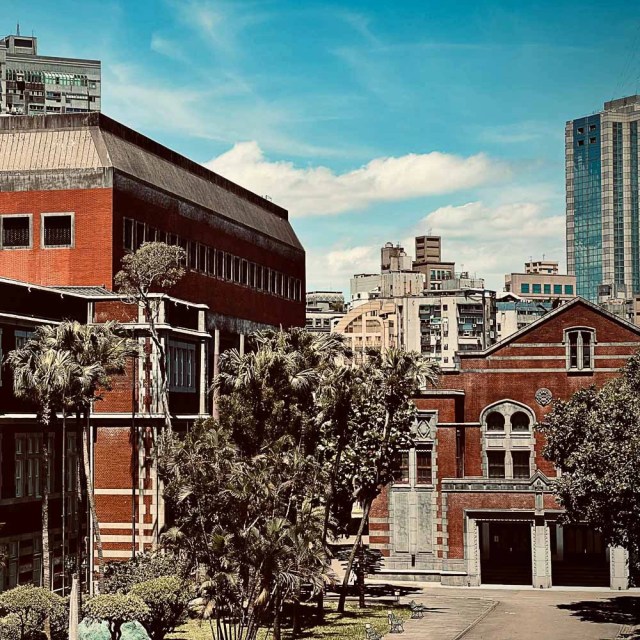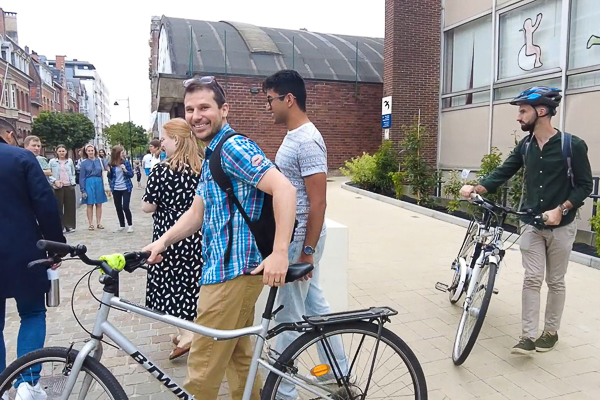Stuck Together in Brussels

We live on a typical Belgian residential street, an avenue lined with row houses. Living in a row house is similar to living in an apartment in that we can hear our neighbors coming and going. If our neighbors to one side are watching TV, sometimes we can hear it. Our neighbors to the other side have a squeaky front door, meaning that we know when they arrive and leave. We try to be fairly quiet on the weekend mornings so that we don’t bother anyone around us. Because our house is a multi-unit house, we have neighbors who live in our building too, and we hear the people above us moving around at night as we’re getting ready for bed.
Walking down the street and observing each individual house provides a tour of different architectural styles. Each house is unique and has its own character. Some could use a bit of attention; some appear newly renovated. Some have grand staircases or doorways; some have modest entrances. Some have drastically-pointed roofs, and some are less dramatic. Some have small yards out front while others have parking spaces.
Diverse but connected
It occurred to me one day as I was walking down the street that this collection of connected-yet-uniquely-individual row houses is perhaps a good picture of the Church. We as individuals in the church can be quite diverse in our backgrounds, family situations, music preferences, and gifts. In our particular European setting, the people in our church come from different cultures and even speak different native languages.
In God’s good design, however, we come together to form a very real unit called the church body. We aren’t asked to become homogenous; rather, our differences often serve to highlight the variety of ways that God works in this world. We will need to lay aside our preferences for the benefit of the body from time to time, but the diversity displayed in our unity testifies to the power of the gospel of grace.
The Church on a more global level also reflects this connected individuality. The American church just isn’t complete without her African brothers and sisters. And vice versa. The Latin American church needs her Asian counterparts as well. And vice versa. We need to have a global perspective on church so that we don’t become narrow-minded and forget that “our way” of doing things isn’t the only way. I’m not arguing for lazy doctrine or a low view of the Church; on the contrary, I’m placing an incredibly high value on the Church as the means by which God is making His kingdom come on this earth—the entire culturally-diverse earth. God’s kingdom that is coming through the Church and that will come more fully one day encompasses the Church global, not just our particular brand of the local church.
As I walk down my street and contemplate the lovely architecture of the houses and admire each one as a unique construction, I’m reminded to value the similar diversity displayed in my local church—and in the global Church—and to see each uniquely individual person as part of the connected body of Christ.
Katy B. serves with MTW in Brussels, Belgium.
*Last name withheld.





